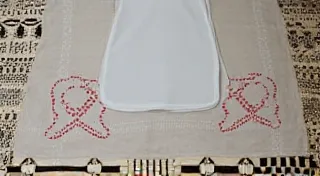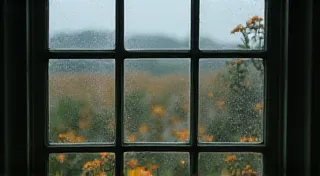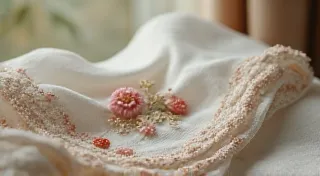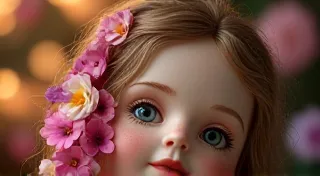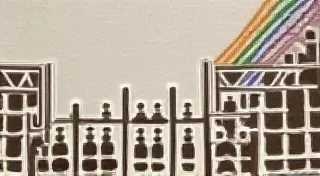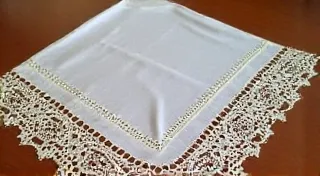The Role of Handkerchiefs in Victorian Etiquette and Social Customs
Discover the significance of handkerchiefs in Victorian-era social customs and etiquette.
Antique handkerchiefs offer a fascinating window into the past, and nowhere is this more evident than during the Victorian era (roughly 1837-1901). Far more than mere practical items for wiping one's face, handkerchiefs were crucial components of Victorian social etiquette, conveying messages and reflecting a woman’s status, taste, and even personality. Understanding this context significantly enhances our appreciation for these delicate, often exquisitely embroidered, collectible linens.
A Language of Linen: Signals and Social Standing
Victorian society was highly structured, and communication often relied on subtle cues. Handkerchiefs played a vital role in this silent language. The way a woman carried, folded, or dropped her handkerchief could convey a wealth of information. For instance:
- A Dropped Handkerchief: While seemingly accidental, dropping a handkerchief could signal availability or interest in a gentleman. The gentleman would then retrieve it, initiating a potential conversation.
- Holding it to the Face: Covering the face with a handkerchief often meant shyness, distress, or even feigned illness – a way to subtly indicate discomfort or a desire to be left alone.
- The Fold: The way a handkerchief was folded also communicated meaning. A neat, elaborate fold indicated a lady of refinement, while a more casual fold might suggest a more relaxed demeanor. The artistry involved in creating these intricate folds speaks to the skills expected of women of the era, something further explored in the broader context of antique linen and its personal narratives. This complexity reflects the deeper skills involved in other forms of needlework and textile artistry prevalent during this time.
- Embroidered Monograms: A prominent monogram was a clear indication of a lady's name and social standing. These were typically very intricately done, indicating wealth and a good education.
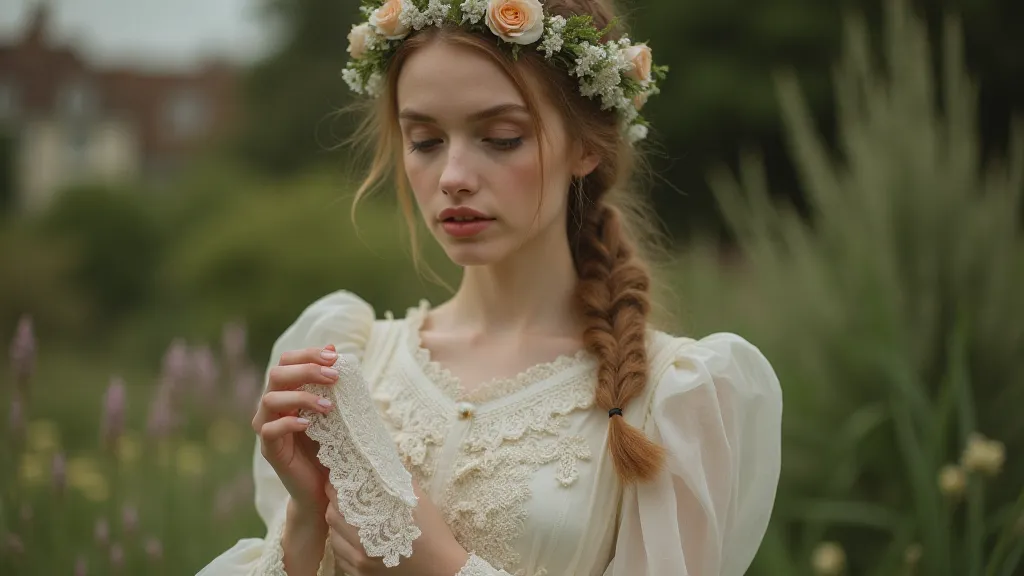
Fabric and Finery: Reflecting Status
The fabric of a handkerchief was a significant indicator of a woman’s wealth and social standing. While cotton and linen were common, finer materials like silk, satin, and even velvet were prized. The quality of the embroidery also played a huge role. Lace, whether handmade or imported, was a sign of considerable wealth. Early examples of machine-made lace were less valuable than hand-made, though the latter were more expensive. The intricacies of antique lace techniques themselves – from meanders to filet – provide another layer of understanding of the craftsmanship and artistry involved in creating these treasured heirlooms. For those fascinated by the historical development of these intricate designs, a deeper dive into Understanding Antique Lace Techniques: Meanders, Filet, and More provides valuable insights.
The evolution of textile production during the Victorian era influenced handkerchiefs. The rise of mechanized weaving meant that larger quantities of fabric became available, making higher quality materials more accessible to the middle classes. However, the most exquisitely embroidered handkerchiefs – those with elaborate floral designs, delicate birds, or personalized motifs – remained the domain of the wealthy elite. The very edges of these delicate linens often bore incredibly intricate detailing, a testament to the skill and patience of the women who created them. Learning about these Edge Treatments: Point Lace, Drawn Thread, and More, such as point lace and drawn thread, reveals a further appreciation for the dedication required to produce such objects. These edge treatments weren't just decorative; they represented significant investments of time and skill, further elevating the handkerchief's value and status.
Hand Embroidery: A Demonstration of Skill
Hand embroidery was a crucial skill expected of Victorian women, particularly those of a certain social standing. A beautifully embroidered handkerchief demonstrated not only artistic talent but also patience, diligence, and refinement. The complexity and quality of the embroidery directly correlated with the woman’s skill and the family’s wealth. The subtle narratives woven into the fabric, through color choices and design motifs, frequently hinted at personal histories and familial connections – a fascinating area of study for those interested in the stories hidden within antique linens. The skill wasn't limited to just the overall design; even the selection of threads and the subtle variations in stitch density contributed to the final artistic impression. The ability to master these techniques was a mark of a well-educated and refined woman.
Common embroidery techniques used on antique handkerchiefs include:
- Berlin Woolwork: A popular technique for creating detailed pictorial scenes.
- Chain Stitch: Used for outlining and creating textured patterns.
- French Knot: Used to create raised, three-dimensional elements.
- Eyelet Embroidery: Creating decorative holes, often reinforced with lace.
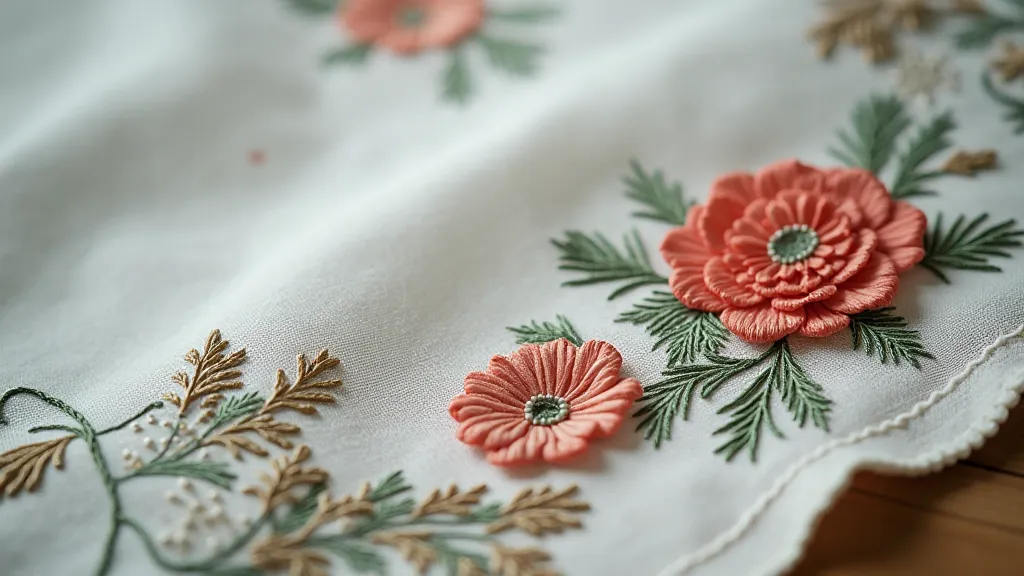
Beyond the Surface: The Personal Stories Woven Within
Beyond the visual appeal and technical skill involved in creating antique handkerchiefs, lies a deeper layer of meaning. Each stitch can be interpreted as a connection to the past, a tangible link to the women who poured their time, skill, and emotion into these creations. Considering the era’s social constraints and expectations, these handkerchiefs offer a glimpse into the lives of women who used needlework as a form of self-expression and social communication. The choice of colors, the selection of motifs, and even the imperfections in the stitching can provide valuable insights into the individual’s personality and life experiences. For instance, a handkerchief embroidered with forget-me-nots might symbolize remembrance or lost love, while a depiction of a specific flower could represent a familial connection or a personal aspiration. Examining the overall design and execution of a handkerchief often uncovers a tapestry of unspoken narratives, adding another dimension to its historical significance. The care and dedication invested in these objects reveal much about the values and expectations placed upon women during the Victorian era. The very act of creation became a subtle form of communication, conveying messages of love, loss, and aspiration.
Caring for Your Treasured Heirloims
Today, antique handkerchiefs are treasured collectibles, offering a tangible link to the past. Preserving these delicate pieces requires careful consideration of storage and handling practices. Exposure to sunlight can cause fading, while improper cleaning methods can damage the delicate fabrics and embroidery. It’s essential to store handkerchiefs in acid-free tissue paper and in a cool, dry place away from direct light. Professional cleaning is often recommended for valuable or fragile pieces, while more minor soiling can be carefully addressed with gentle cleaning solutions specifically designed for antique linens. Understanding the intricacies of caring for your collection can extend their lifespan and ensure that future generations can appreciate their beauty and historical significance. For more detailed guidance on preservation techniques, visit How to Care for Your Antique Handkerchief Collection. Proper storage and cleaning aren't just about maintaining the physical condition of the handkerchief; they’re about preserving a piece of history and ensuring that its story can be shared for years to come.
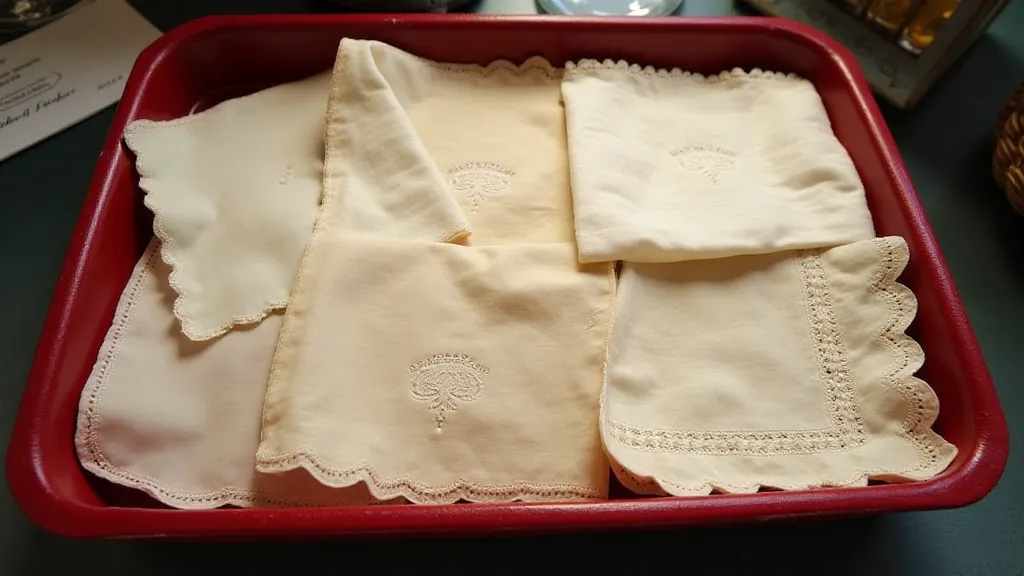
The Enduring Legacy of Victorian Needlework
In conclusion, the seemingly simple handkerchief holds a profound significance in Victorian social customs and etiquette. It serves as a microcosm of the era’s values, beliefs, and artistic sensibilities. These linens are more than just decorative objects; they are tangible representations of a bygone era, filled with unspoken narratives and enduring beauty. By appreciating the historical context, artistic skill, and personal stories woven into these treasures, we gain a deeper understanding of Victorian society and the remarkable women who created them. The skills involved in producing these beautiful objects were often passed down through generations, creating a rich tradition of craftsmanship and artistry. The evolution of these skills is a testament to the ingenuity and creativity of Victorian women. The whisper of the threads themselves beckons us to unravel the personal narratives etched within the delicate fabric, revealing glimpses into the lives of those who came before us. Discovering these silent voices contributes to a richer understanding of our shared heritage and the enduring power of human creativity. The lasting appeal of antique handkerchiefs lies not only in their beauty but also in the stories they tell – stories of love, loss, and the enduring human spirit. They are a tangible reminder of a time when craftsmanship and artistry were highly valued, and when even the simplest object could be imbued with meaning and significance.
